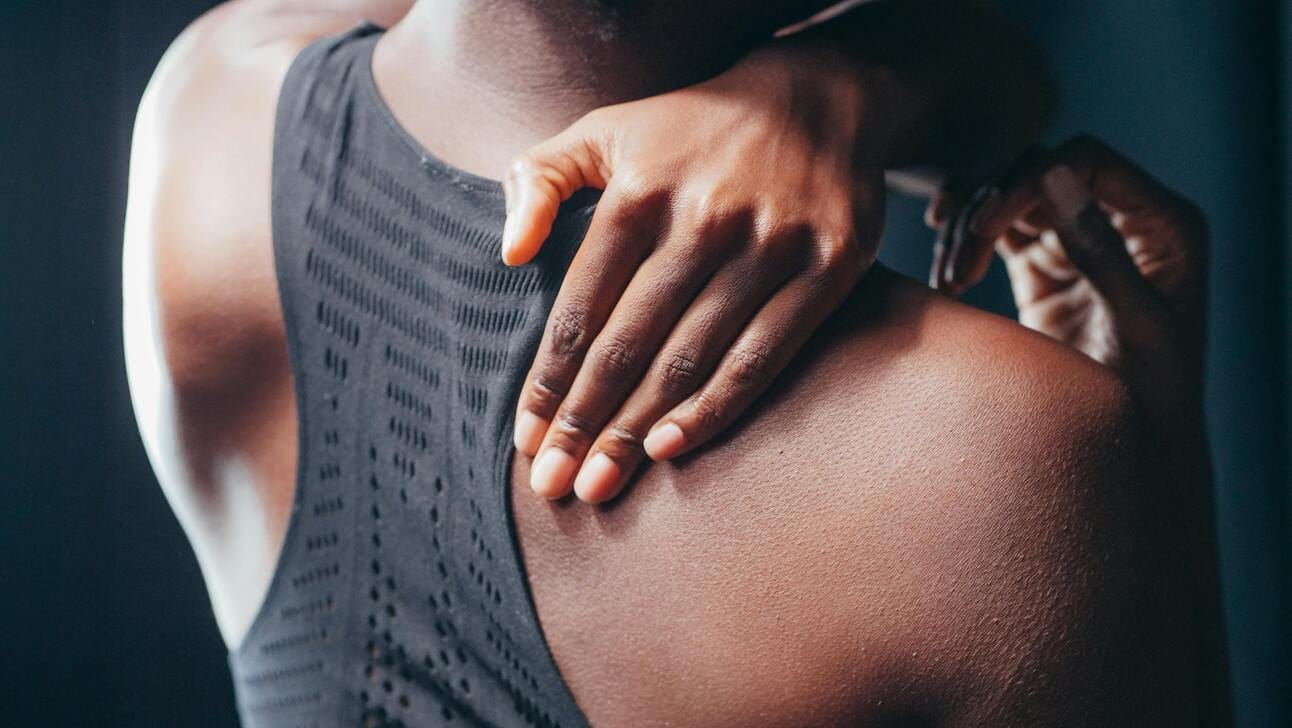This week, we're shifting the focus upward, to your shoulders.
If you've ever felt that lingering ache after overheads, or noticed soreness creeping in after a few games, you're not alone. Pickleball asks a lot from your shoulder joints, especially if you're over 30, desk-bound during the week, or swinging with mechanics that could use some work.
In this issue, we're covering:
Why shoulders are one of the most common pain points in rec play
What's actually happening when they start to flare up
How your overhead technique might be making things worse (and what to fix)
The goal? Help you swing smarter, stay pain-free, and keep your arm ready for the next point, not the ice pack.

The Pickleball Shoulder Problem: What's Really Causing That Ache
If you've ever felt a dull ache in your shoulder after a few overheads, or woken up the next day wondering why it hurts to grab your coffee mug, you're not the only one.
Shoulder pain is one of the top reasons rec players end up dialing back their court time. The problem? It's rarely caused by a single swing. It's a slow build of mechanical overload, mobility loss, and postural compensation. If you're over 30 or sit at a desk all day, you're at even higher risk.
Why the Shoulder is So Vulnerable in Pickleball
Think of your shoulder as a golf ball sitting on a tee. It's a high-mobility, low-stability joint that relies on coordination more than brute strength to stay healthy. But pickleball asks it to do a lot:
Rapid overhead swings from awkward positions
Reaching or reacting late, with the elbow flaring out
Repeated loading of the shoulder complex without proper warm-up or recovery
Add in modern life, where your shoulders are already internally rotated and slouched forward most of the day, and you're setting the stage for overload.
The Most Common Culprits
Rotator Cuff Tendinopathy
The rotator cuff stabilizes your shoulder during dynamic motion. When the small tendons of this group get irritated (especially the supraspinatus), you'll feel it as a dull ache deep in the joint, especially after overheads or while sleeping on your side.
Subacromial Impingement
This happens when the space between your upper arm bone and shoulder blade gets compressed during elevation. Poor posture, weak scapular control, and tight chest muscles make it worse. You might feel a pinch when lifting your arm overhead.
Biceps Tendinitis
The long head of the biceps travels through the shoulder groove and is prone to inflammation with repeated overhead movement, especially if the arm is rotating outward under force (like during a smash or high serve return).
Labral Irritation
The labrum is cartilage that helps stabilize the shoulder socket. While full tears are rare in rec players, repetitive stress can lead to aching, clicking, or a sense of instability when trying to accelerate quickly.
Early Signs to Watch For
Pain during or after overhead swings
Discomfort with reaching, dressing, or sleeping on one side
Shoulder "catching" or clicking under load
Loss of overhead range or speed
Needing more time to recover between sessions
These aren't just signs of getting older. They're signs your shoulder mechanics need a tune-up.
What to Do About It
Strengthen the Stabilizers
Rotator cuff and scapular stabilizers (like the lower traps and serratus anterior) don't get strong by accident. You need direct work: banded external rotations, prone Y's and T's, and controlled wall slides.
Restore Full Overhead Range
Tight lats, pecs, and thoracic spine restrictions limit your ability to reach safely overhead. Incorporate foam rolling, thoracic extensions, and active mobility drills that open up this chain.
Rebuild Control Under Load
Start adding slow, controlled overhead presses and eccentric shoulder work into your routine. This teaches your joints to handle force across a full range, exactly what they're asked to do in real play.
Fix Your Setup Before You Swing
If your warm-up looks like a few dinks and a prayer, your shoulder isn't ready. Your nervous system needs time to turn on postural stabilizers and prime joint motion. See Article 2 for the best shoulder-friendly warm-up moves.

Why Your Overheads Might Be Hurting You (And How to Fix Them)
Overheads should feel powerful and satisfying, not like a gamble with your rotator cuff. But for a lot of rec players, that post-slam shoulder ache is a familiar sting. Here's the thing: it's not just the force of the swing that's to blame. It's how you're setting it up.
The Real Problem Isn't Power, It's Position
When most players feel shoulder discomfort after overheads, the root cause isn't weakness. It's poor positioning. If your body isn't stacked correctly when you go to swing, your shoulder compensates and takes on more stress than it's built to handle.
That typically shows up in one of three ways:
Late Reaction
You're rushed, trying to catch up to a lob, and the arm goes up without proper body alignment. The shoulder jams upward, and you lose the ability to generate force from the ground.
Lack of Spinal Extension
Years of desk posture have rounded your upper back. Now you can't lean back or rotate properly, so your overhead relies entirely on the shoulder joint, not the torso's full rotational power.
Poor Kinetic Chain Transfer
Instead of driving force from your legs and hips, you're arming the shot. You're flinging the paddle from your shoulder alone. That isolates the joint and invites overuse.
What Healthy Overhead Mechanics Should Look Like
A pain-free, powerful overhead draws energy from your entire body. Think of it like a whip: the motion starts from the feet and builds through the legs, hips, trunk, shoulder, and finally the arm and paddle.
Here's what you want to feel:
A strong push off the back leg, not just a hop
Open hips and ribcage, allowing for full trunk rotation
The paddle stacked above the shoulder, not behind the head
A controlled follow-through that doesn't yank the joint
When your overhead is grounded in mechanics like these, it not only feels smoother but keeps your shoulder out of the danger zone.
Fix the Foundations
Here's where to focus if your overheads are flaring you up:
Restore Thoracic Extension
You need to lean and rotate to hit clean overheads. Thoracic cat-cows, foam roller extensions, and thread-the-needle drills will help restore this motion.
Mobilize the Lats and Pec Minor
Tight lats and chest muscles pull your shoulder forward and down, right into impingement territory. Use targeted stretches and myofascial work to free them up.
Train the Kinetic Chain
Try overhead tosses with a tennis ball, diagonal reaches with resistance bands, or rotational lunges. These train your body to transfer force from the ground up, instead of dumping it all into your shoulder.
Practice "Stacked" Overheads
During warm-ups, deliberately exaggerate getting under the ball. Set your feet, stack the paddle above your shoulder, and push from the ground. Groove the habit in low-stress situations.
That's a wrap for Issue #3
If your shoulder's been acting up, I hope this gave you a clearer picture of why and what to do about it. These aren't just "play through it" tips. They're the same movement principles that keep players on the court longer without breaking their bodies down.
Got a friend who's always rubbing their shoulder after games? Send this their way. And if you have questions, just reply to this email. I read every one.
More next week.
Boris.
What did you think of this week's newsletter?
Disclaimer: This newsletter is for educational and informational purposes only and does not constitute medical advice. The content is not intended to be a substitute for professional medical advice, diagnosis, or treatment. Always seek the advice of your physician or other qualified health provider with any questions you may have regarding a medical condition. Never disregard professional medical advice or delay seeking it because of something you have read in this newsletter.
